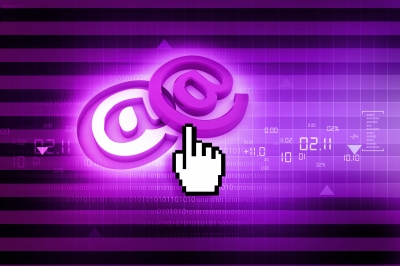
Image courtesy of cooldesign at FreeDigitalPhotos.net
Have you decided it’s the right time for your business to join the many businesses already using email marketing? If so, you are making a wise decision.
For one thing, email is still one of the most effective means of communicating with your audience and driving more business. According to a recent stat quoted by Jenna Hanington in her article for Pardot, “Email is the preferred method of communicating with businesses for 69.7% of US internet users.”
However, this does not mean that you should just start blasting out emails willy-nilly. As with all marketing, you must first begin with a sound email marketing plan and strategy.
Here are a few things that digital marketers should consider as they plan out their email marketing:
1) Timing
Determining when you should send out your emails is important. Sending your emails out at the right time increases the likelihood that the recipients will click on and read them. And of course, the more people who open your emails, the better.
In truth, there is probably no “absolutely best time” for sending out emails. What works for one organization does not work for all. Finding your “best” time for your emails will require some trial and error on your part. Whichever time you choose, just make sure you stay consistent.
For example, after doing your research, you determine that most of the people receiving your emails open and read them when you send them out every second Wednesday of each month at 10AM. Our advice is that you add this date to your calendar as the “best time” for your email marketing.
Of course, nothing is set in stone. As more people start subscribing and unsubscribing, you may eventually reevaluate and continuously find your best time.
A recent article via WordStream, “Perfect Timing: The Very Best Time to Send Email Newsletters,” shares general advice on good times to send email newsletters that are widely accepted by others in the email marketing community. The author, Megan Marrs, adds a few other suggestions as well.

Image courtesy of FreeDigitalPhotos.net and jscreationzs
2) Audience
Finding your target online audience is another key to successful email marketing. Without the right audience, you’ll spend a lot of time designing an email campaign that benefits no one. You’ll not only waste your time, but you will also waste their time (and possibly be reported for spam).
If you’d like to learn more about what happens with email spammers, I discuss aspects of email marketing, including the ugliness of being “blacklisted” due to spamming in one of my articles for SteamFeed, “Top 10 Best and Worst Email Marketing Strategies…and Why You Should Care!”
As for obtaining the right audience for your email marketing efforts, organic list building is always your best bet. Include places on your website and Facebook Page(s) where people can easily sign up for your emails. You can also create links to your signups and send them out through your other social media channels. You may also consider adding your current customers, past customers, and prospects to your list of recipients.
3) Color
Dozens upon dozens of articles discuss the psychology of colors. Colors definitely affect us on many different levels. In fact, may not even realize the extent of how colors affect our moods and our purchasing decisions.
Marketers and advertisers, on the other hand, do and should pay attention to colors and their effects on people. Using the right colors can make a big difference in the success of your email marketing campaign.
This article via mailjet, “Psychology (and deliverability) of colors in email marketing,” does a fantastic job of breaking down the feelings associated with each of the 7 basic colors. It also provides suggestions for how you can apply each color to your email marketing.
4) Content
Once you have developed your list of recipients, as well as determined the colors and design for your email marketing campaign, then it’s time to decide on content. The content you include in your emails should provide value in some way to your audience. Otherwise, they may unsubscribe after their first email.
In a nutshell, knowing your audience and meeting their content consumption requests is important. Does your company offer products or services your readers would like to know more about? Are they interested in reading your content for educational purposes or do they want your content to simply entertain them? Knowing your audience will help you answer these questions and provide them with the content they crave.
There are many other aspects and best practices involved with email marketing. As I implied earlier, there is no “one-size-fits-all” solution to email marketing, but any company can achieve success when they find what email system works best for them.
This article was syndicated from Business 2 Community: 4 Things to Consider In Your Email Marketing Planning
More Digital & Social articles from Business 2 Community:
- 10 Best Practices For Influencer Marketing On Instagram
- Why Your SEO Strategy Still Matters—It’s Evolving
- Let’s Forget Link Building For A While – Other Vital Verticals Of SEO
- How to Create Your Brand Memes: Social Media Marketing Icons
- Schooled In Social Media 2015: Millennials Share For Personal Branding




